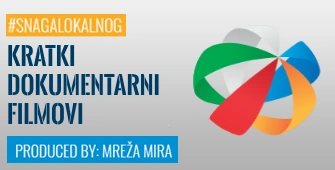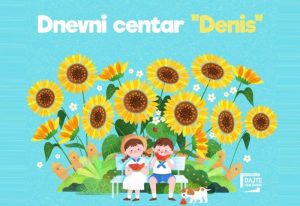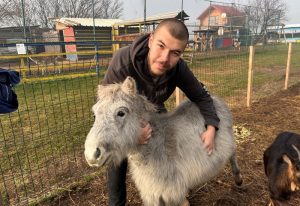“It’s fascinating to look into the pre-war past of Srebrenica. The same space, but in that period and today completely two different worlds. You see a place that is full of life, you see a developed industry, you see a normal, healthy social system, everything we don’t have today. That’s why such stories are very important, especially for young people, for generations yet to come, because all their life stories are related to post-war Srebrenica and the narrative they heard at home. They grow up in such an environment where everything is negative, everything is bad. We at least need to show them that something else is possible,” says Bekir Halilović.
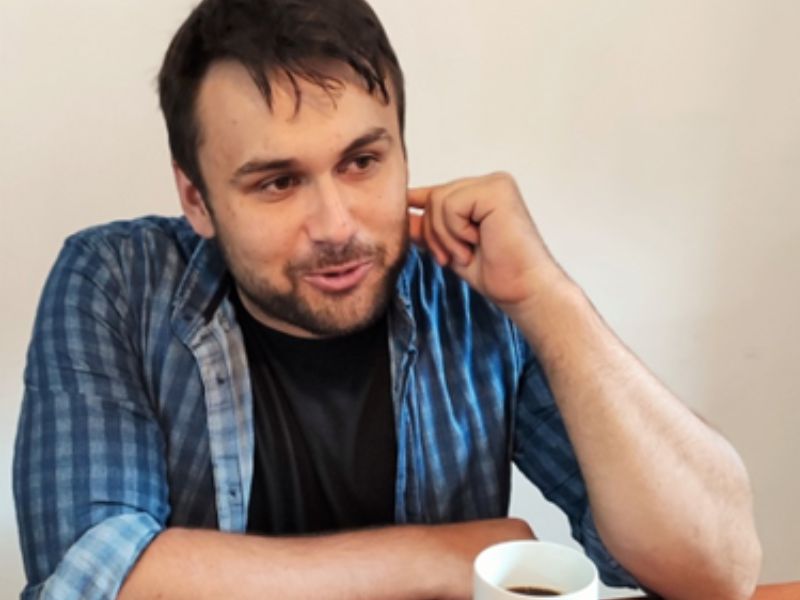
Bekir Halilović (28), president of the Assembly of the Association “ADOPT – accept Srebrenica”, is the youngest member of the Association, which gathers people who share a common vision and values of Srebrenica. The Association was established in 2005 by the Adopt Srebrenica, an informal group of citizens.
“The idea was to offer the people of Srebrenica a space where they can communicate freely and where people of different national backgrounds can talk about common topics. We were officially registered in 2016 as a non-governmental organization that still has the same purpose. Sometimes people are afraid. They simply need to be offered an alternative, that in relation to what they receive as information in their own community, there is an alternative. “ADOPT” actually serves that purpose, to offer that alternative, another source,” states Halilović.
With their activities, they contribute to preserving the value of community without running away from the past.
“Pre-war Srebrenica is inspiring. When you take one photo, you see people with different names functioning normally. You can rarely take such a photo in today’s Srebrenica”.
Srebrenica used to be a developed municipality full of life. Today it is not, and with all the difficulties, politics and the media create additional pressure, especially for young people. That is why stories about the values of the spirit of community and good neighbors, which developed bonds between people, are very important.
“Especially for young people, for generations yet to come, because their entire life story is related to post-war Srebrenica and the narrative they received at home. They grow up in such an environment that everything is negative, that everything is bad, and in fact we need to show them that it is possible, if nothing else,” adds Halilović.
International Day of Commemoration Week
One of the activities of the “ADOPT” Association, which mostly involves young people, is the International Week of Commemoration, held this year for the fourteenth time. A rich program was organized under the slogan “Lights from the Dark”, and one of the contents was an exhibition of objects from abandoned buildings called “The left behind”.
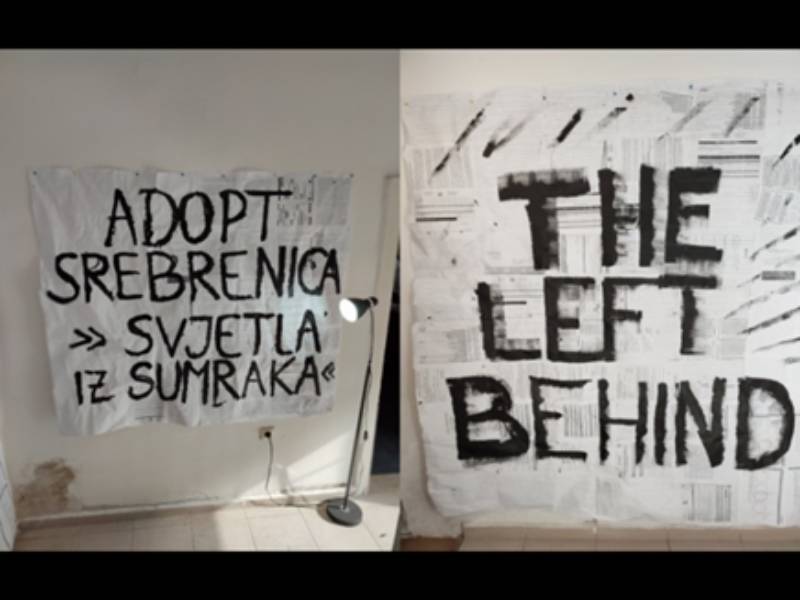
Objects found by members of the Association in destroyed industrial and family buildings in the area of the Srebrenica Municipality are on display.
“Maybe we are a little late. I remember well, only when we came back many more buildings were devastated. People still returned here and there. Someone renovated the house, someone, if anything, arranged and cleaned it. So these are some private things that we managed to find in the facilities that were available, without destroying any facility, without alienating other people’s things,“ says Halilović.
Among the objects on display, in addition to photographs, various documents, there are, for example, dispensers and bottles in which Srebrenica healing water Guber was once sold in pharmacies.
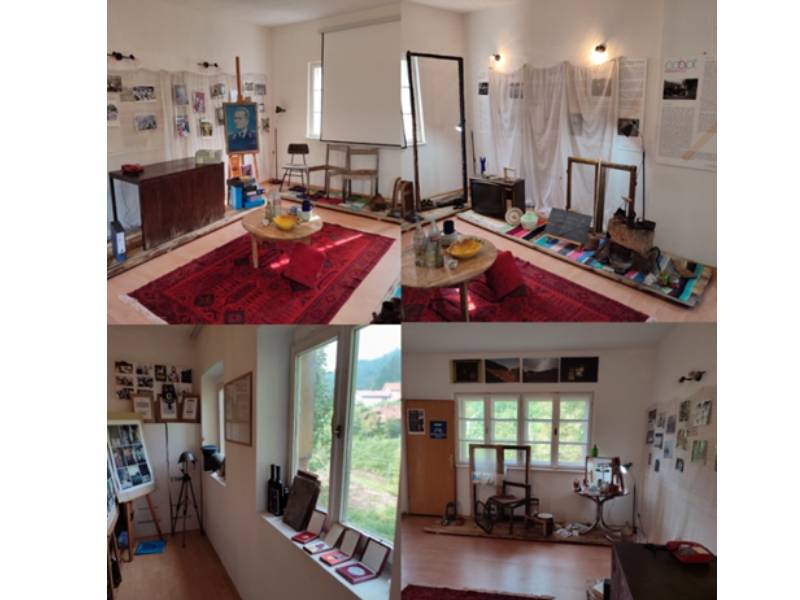
The exhibition “The left behind” is a continuation of the exhibition “(In) The Place of Life” from 2018, which presented photos of Srebrenica industrial plants that are not operating today.
“It was important for us to preserve that moment, in the sense that we hope that at some point what we photographed will become history, that it will be a past that we will look at with a lesson, and that at some point these factories will again have workers and will come to life. Last year we said we would go one step further. We took photos of family buildings and made this photo exhibition”, says Bekir Halilović.
He describes the objects they visited as inspiring.
“When you see a building that is empty, destroyed, it tells you its own story that at one point someone lived there, that there was a family that had a life and plans for the future”.
Some residents of Srebrenica recognize photos of their houses and the houses of relatives and friends. Those photos remind them of the people they lived with, who are no longer there.
“Someone will tell you on the street that they remember a certain house and the people who lived in it. When I talk, for example, with a relative who lives in Sarajevo today, who is from a village in Srebrenica, whose house was destroyed, he_she always remembers his_her father who was killed, he_she remembers his_her brothers who were killed, and it’s all related to that building. That building used to bring those people together, the family, it was a home. Those people don’t exist, that home doesn’t exist,” says Halilović.
Documentation Center ADOPT Srebrenica
In order to save valuable memories of pre-war life and people in Srebrenica from being forgotten, the Association collects photographs, video materials, documents and objects through the “Documentation Center” project. The source of the archival material is mainly the personal archives of the donors. One part was collected from various publications that they analyze. Some of them, like postcards, were found on the Internet. Furthermore, one of the sources is documentation that they accidentally found in devastated buildings in Srebrenica.

“When people were leaving Srebrenica in ’95, they were saving their lives. They didn’t have time to take or save materials, such as photographs, documents, everything that is a personal link of one person, a family. A photograph is something that reminds us of certain times,” Halilović points out.
In Srebrenica, many were left without family members. The personal story motivates Halilović in his search for photographs, documents and objects with which the Association tries to preserve valuable memories from oblivion.
“Let’s be specific. I like to say that our luck is a little strange, but I was lucky enough that my late grandmother saved some photos of my late grandmother. If there weren’t those photos, I wouldn’t even know what she looks like. Unfortunately, I have relatives who are my age and who are not even that lucky. They lost their parents, in this case their father, of whom they have no memories at all, but they don’t even have a photo to know what their parent looked like. That’s why we do this,” adds Halilović.
Bekir Halilović was born in January 1994 in Srebrenica. He was 18 months old in July ’95. He survived the genocide, and although he has no direct memories, he knows what happened. His family got separated on the way to Potočari. Bekir’s father went to one side, and his mother with him in her arms and his two older brothers Sejo (11) and Samir (7) to the other side. He did not remember his father, who was among more than eight thousand Bosniaks killed.
“The father was found in one of the mass graves near Zvornik. The place is called Lažeti, that’s where he was found. In 2003, he was buried at the first collective funeral in Potočari”.
In the same year, the rest of the family returned to Srebrenica from the refugee camp in the village of Mrdići near Banovići. They arrived in Mrdići from Kladanj, where they, along with more than 25 thousand women and children from Potočari, were deported by the Army of Republika Srpska. Bekir’s mother remembers that time well, it was often mentioned in the family.
“Mom says that at one point the truck we were on was stopped, and I started crying. Then, scared of what could potentially happen to me, she put her hand over my mouth, believing that it would be better for her to drown me than for someone to take me from the truck. But, thank God, we managed to arrive alive and well in Kladanj, and were later transferred to Banovići, where we lived until 2003,” says Halilović.
In July 1995, Bekir’s mother was two years older than Bekir is today.
“It was difficult for her for sure. Especially with three children, in a place where you’ve never been before, where you don’t know anything, with a difficult fate behind it. In that period, she was a young woman, 30 years old. Our father was 34 years old when he was killed. A young woman, in someone else’s world, with all that tragedy, I guess it wasn’t easy for her, but she fought, she managed to fight, thank God. Especially with three male children, I always like to underline that,” emphasizes Halilović.
Returning to Srebrenica with the fresh scars of the war, a Srebrenica he knew only from stories in, was an interesting experience from the perspective of nine-year-old Bekir.
“Many of these facades were demolished, destroyed, devastated, but there were many more people than today. Still, you could see someone here and there on the street, find someone. From that aspect of a nine-year-old child who lived in a refugee camp, first, you come to Srebrenica where you have your own house. Then, for the first time, when I start school here, until then I never had the opportunity to meet someone who was not Bosniak, the teacher is of Serbian nationality, the other students too, so it was quite a bit of a culture shock at that moment”.
It was not easy for the nine-year-old in the beginning, like most returnee children.
“At one point, I guess the children are not quite aware enough, we are teased because we are…, because at that point, I guess that certain narrative towards someone who is not a Serb should be negative. That’s what happened to us, teasing on a national basis, those weren’t exactly the best moments. Most of those people who went to school with me have changed for the better. At least, those people I know through school don’t have that anymore, at least that’s what I can feel at first,” adds Bekir Halilović.
From cultural shock to fostering cultural diversity is the path that Bekir Halilović took in Srebrenica. Although today he spends part of his time in Gračanica, he returns to Srebrenica and affirms its pre-war values through the ADOPT Documentation Center. He also talks a lot about pre-war Srebrenica with Krsto Stjepanović.
“Krsto is a living encyclopedia. There are many people in Srebrenica that we take for granted. When you sit down and talk to them it’s an incredible value, it’s an incredible asset. Krsto is a special man who understands, who helps us ADOPT with his stories. He also gave us many photos that we use for the Documentation Center”, says Halilović.
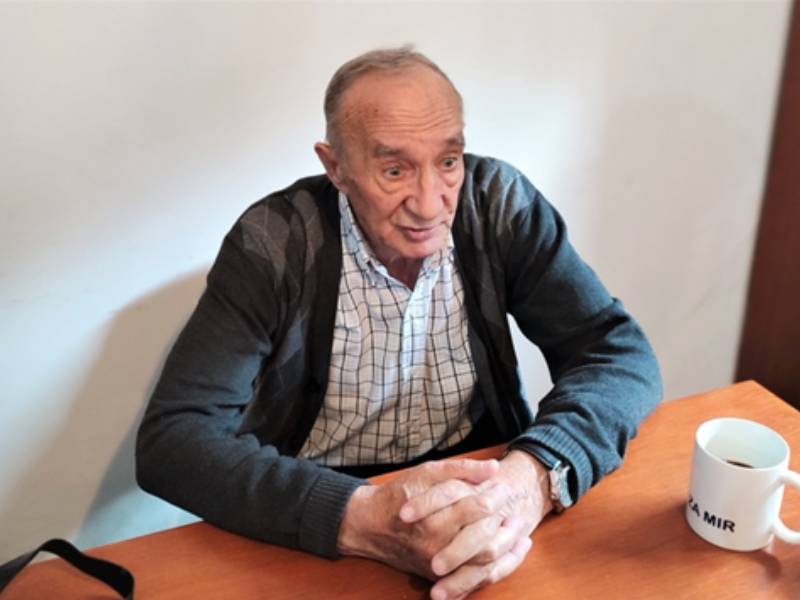
“What is happening now in Bosnia and Herzegovina and Srebrenica is sadness, grief. I lived in a time when it was nice to live, Bosnia and Herzegovina is proud of that time. I can’t fit in now in today’s Bosnia and Herzegovina”, says Krsto Stjepanović.
Stjepanović is from Bratunac, whose life paths led to Sarajevo and Srebrenica. Before the war he was active in the economic and political life of the municipality and Bosnia and Herzegovina.
“I finished school in Sarajevo and got a job. Then in 1969 I had a salary of 35 thousand dinars, when I changed my job and started working at a mine, I got double, 70 thousand dinars, because the mine needed such staff. By the way, at that time, the philosophy was that personnel are the ones you need to invest in in order to do something, and Srebrenica never skimped on that. In order to use and develop its natural resources of ore, forests, spas, it imported personnel from Serbia, Croatia, Slovenia… Srebrenica reached 8 thousand employees out of 36 thousand inhabitants, at that time it was 9 out of 109 municipalities in Bosnia and Herzegovina by the number of employees and population. Srebrenica had 1,400 high school students, and today there are not even 200, it had eight to ten thousand primary school students, of which four schools had a thousand students each. Talking about Srebrenica from my point of view is difficult, sad, because the Srebrenica that existed before, is now gone,” says Stjepanović.
Today in Srebrenica there are no more than 700 inhabitants in the bazaar, and in the whole municipality there are no more than 5 thousand inhabitants. In 2003 there were more, says Bekir Halilović.
“Most people have a narrative about Srebrenica as a place of the dead, of death, of a destroyed city. That is quite a lot of pressure on the people who live here, especially if you are young and eager to live. Someone is constantly emphasizing death to you, then it is not automatically a place for young”.
The story of pre-war Srebrenica, completely different from today’s, is important to save from oblivion for the sake of future generations.
“That’s why people like Krsto. He has experience and wants to share it. People like him are very important, especially for young people, for generations yet to come, because their entire life story is related to post-war Srebrenica. They grow up in such an environment that everything is negative, that everything is bad, and in fact they need to be shown that something else is possible, if nothing else,” adds Halilović.
Bekir Halilović does not fit into the dominant narratives of the war-torn community. He believes that the values of pre-war Srebrenica are a potential in which young people can find inspiration for the future.
“I am the happiest the way I am, this is my nature. I think we are quite poor if we put barriers on ourselves, whatever they may be, if we put boundaries that are quite artificial. I don’t mind that sometimes my own community isolates me, because I believe they are wrong, because I believe that moment will come. People didn’t even believe Galileo that our Planet is round, but the Planet is still round,” says Halilović.
For its activities, the Association does not have and does not seek the support of municipal authorities.
“The local government looks through a political prism, and that political prism is to help those organizations that can repay the debt in a political way. We are not that kind of organization nor do we want to be. We want to help the local community”.
The situation is difficult, but Srebrenica can do more and better, believes Bekir Halilović, president of the Assembly of the Association “ADOPT – Accept Srebrenica”. Associations that contribute to the fight against the devastating consequences of war by trying to save the memories of pre-war life and people in Srebrenica from being forgotten and to affirm values for the future.

